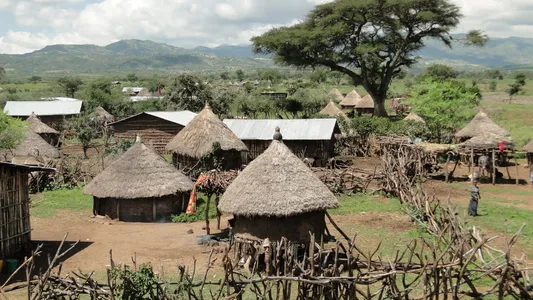
By Michaelson, Published on Oct 17, 2022
Located 600 km away from Addis Ababa, the Konso community resides in the southern part of Ethiopia. For years, the area has been one of tourist’s destinations. Today we will profile the community.
There are nine tribes in the Konso district. They speak a language called “Afakhonso”. Courteous by its nature, the Konso community is also known for its hard work.
Developing an agricultural design of terraced work to combat soil erosion and torrential rain’s impact on their land attests to that. Konso community’s landscape is surrounded by valleys and mountains. The society has beautified this mountainous land and made it usable for extensive farming.
The Konso people have their own judicial system, cultural attire and dance. Konso also has unique features registered by UNESCO in 2003, which enabled it to attract worldwide tourists. One of them is a place named “New York”. This place was eroded by the wind 300 years ago and has morphed into an architectural masterpiece. The second is their terraced work and the third is the Amba villages (Konso traditional towns). The community celebrates the date the artifacts are registered every year in the destination through a festival.
The Amba villages date to more than 800 years old. Although there are more than 35 villages in Amba, UNESCO has only registered 12 of them as world heritage sites. One of these villages is the traditional town (known as Paleta in Konso) is called “Gamole”.
Konso society has an independent center to share the community’s experience and tradition. This center has many services and gathers frequently in a square called “Mora”. On this mora, declarations are made, reconciliation is done, discussions and various agreements are made. Messages from tribal leaders are also conveyed to the community. Fathers gather around the moras and tell stories to the children of the village.
Konso community squares (moras) are of three types.
One is simpler and is found in each of the sub-villages. It is available and people gather and chat every day. They drink the traditional drink called Chaqa when done with a day’s work.
The second type of mora is where religious services are offered and abandoned people are reconciled. When cattle are stolen in the area or when a person is murdered, it is in this mora that the suspect will be brought to justice and be judged. The suspect will be brought to the mora and as there are swearing stones in the cave, the suspect must swear by saying, “If I have committed this crime, may God be the judge on me.” As the stones are considered to be sacred by the community, it is believed that no one swears falsely. Someone who does is believed to be scourged within minutes. This mora is also a place of prayer when there is a lack of rain during the harvest season.
The third type of mora is used only when big annual holidays are celebrated, and one of the holidays is the transfer of power. It takes place once every 18 years and is called “Hulda” by the community. The community celebrates the person in power, who served for 18 years and wishes the new incumbent to have fruitful and productive reign. During Hulda, the generation that ruled for 18 years will tell the community what it has achieved during its reign saying, “we have done this, you do better, be blessed” and hand over the power peacefully. An anointed elder dips flowers with milk and blesses the people gathered by sprinkling it over their heads.
In the Konso community, there is also a tradition where people who have accomplished adventures in the area, won battles, and killed wild animals are rewarded. Stones are planted for people like this and people who play an important role in the community. Konso’s traditional food is known as Kurkufa. It is made from a mixture of corn and moringa leaves.